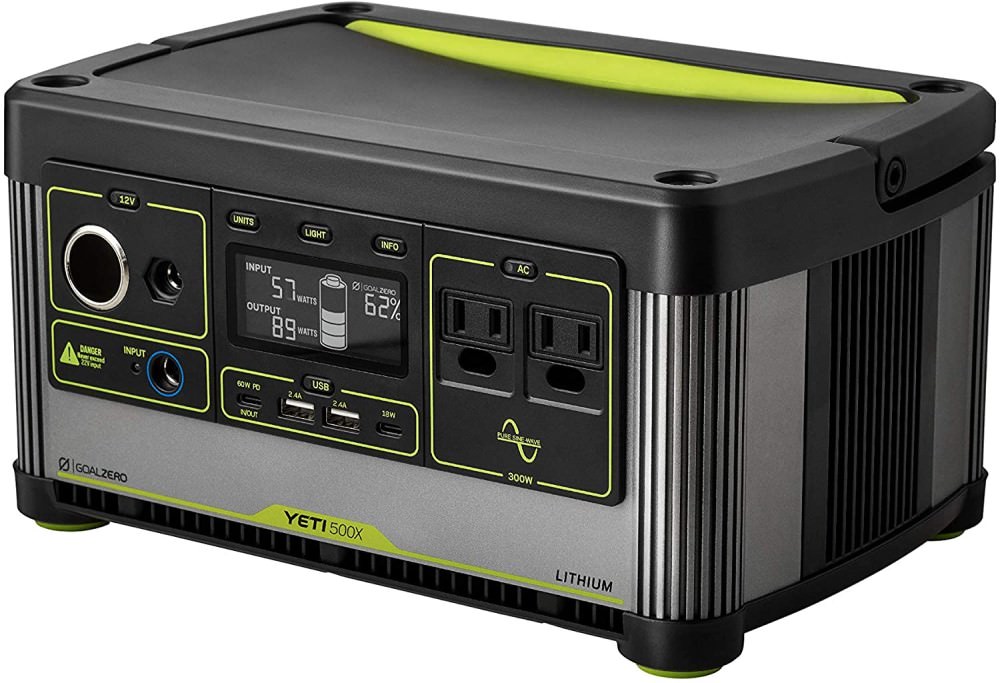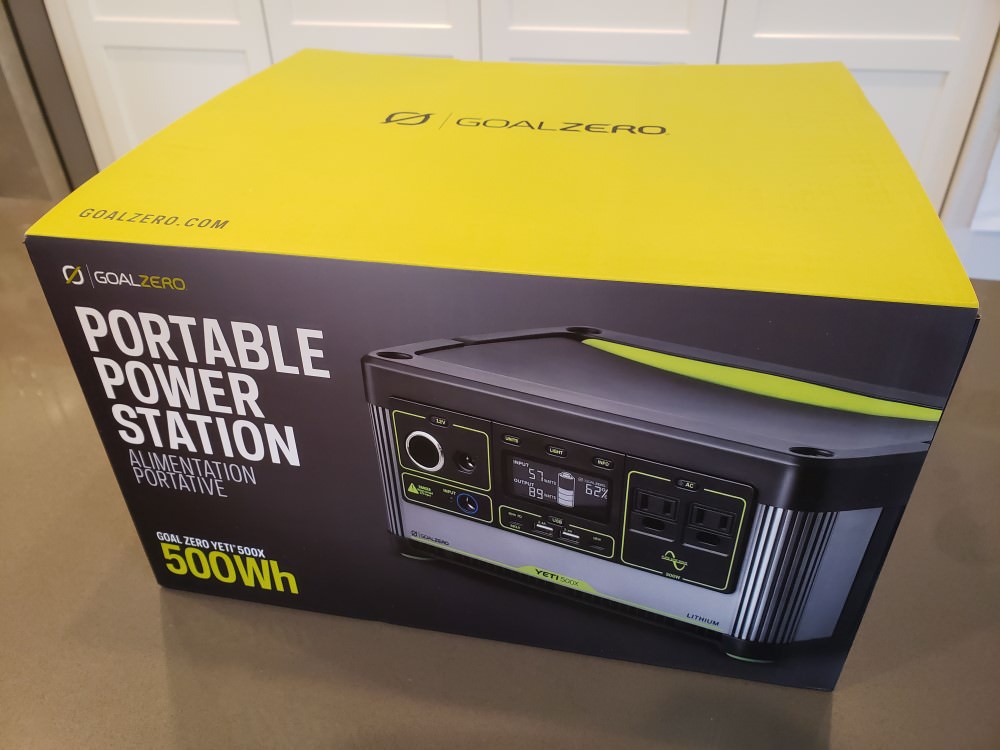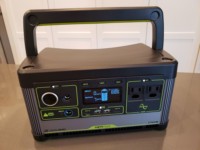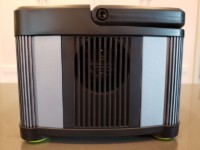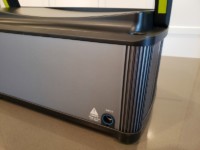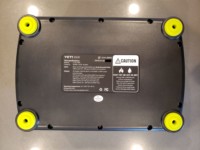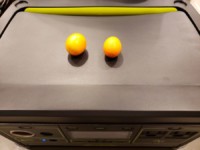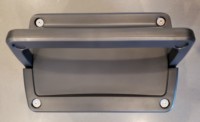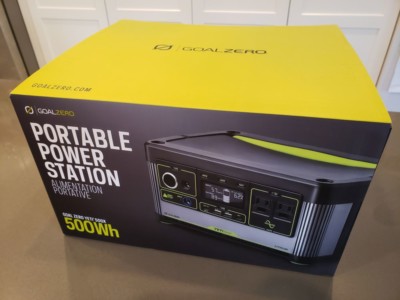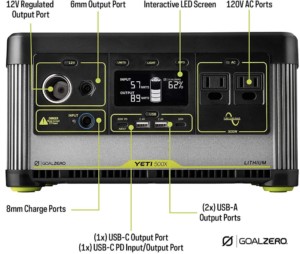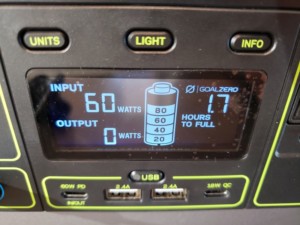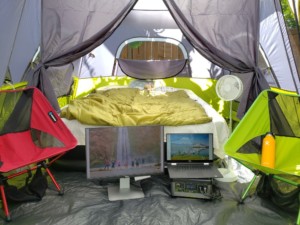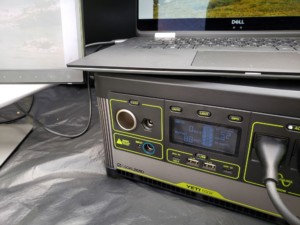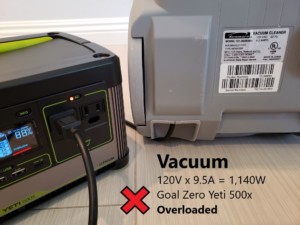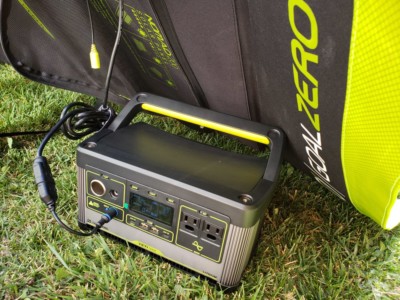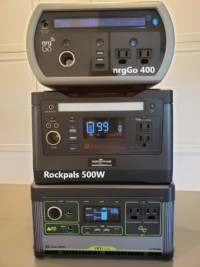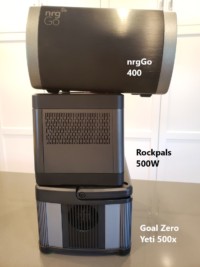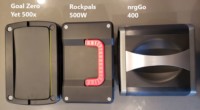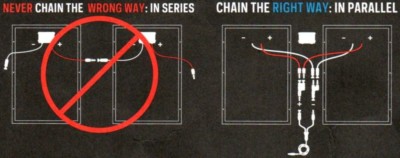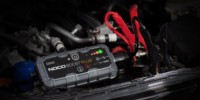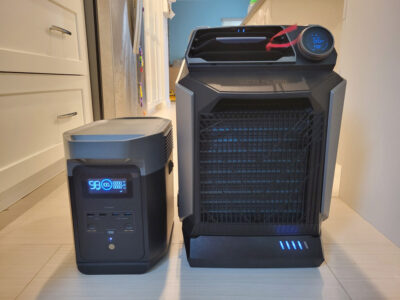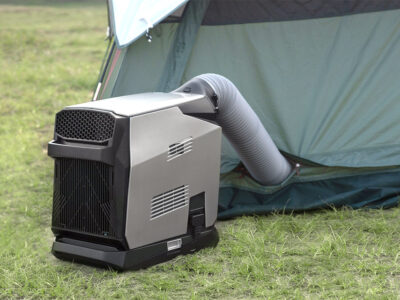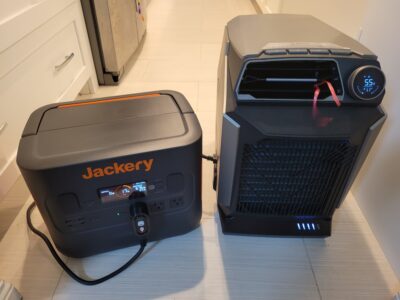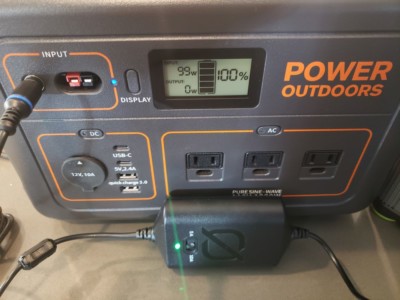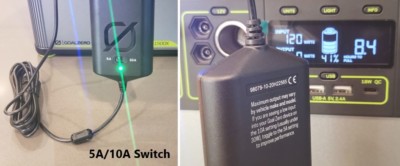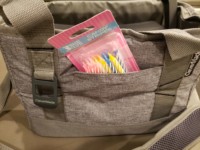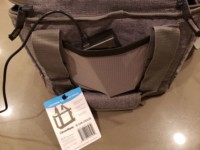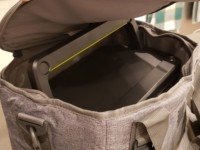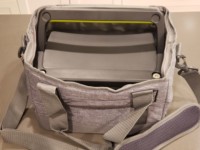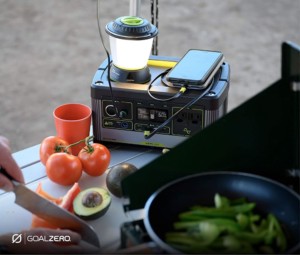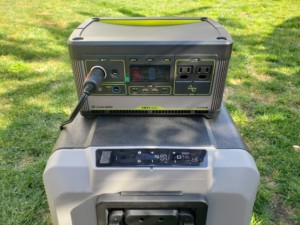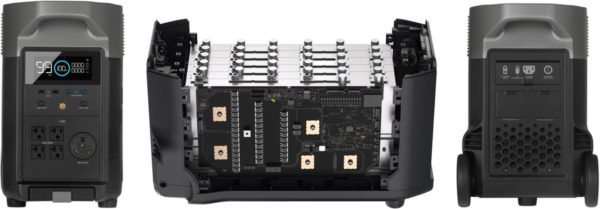Goal Zero Yeti 500x
Pros
- High-quality BMS with LG battery cells
- Tough exterior, compact, and light
- High max input (180W) capacity
- Leading 1200W surge with Pure-Sine Wave
- Industry leader & Safety record
Cons
- High price
- Continuous 300W (not 500W)
- Slightly heavier than competition
- Long auto-shutoff timer
- Battery not replaceable
Contents
Introduction
My friends, coworkers, and family had asked for advice on portable battery stations, gas generators, and solar panels for a variety of reasons over the past, few years. Some were for emergency preparation, outdoor recreation, or simple convenience while on the go. We did not know much at first, but learned a lot as as we looked at a slew of products, ESPECIALLY during last year’s devastating wild fires across the US and Canadian west coast. Then came the COVID-19 pandemic that caused much panic. At the same time, sales for gas generators, battery power stations, and solar panels had seen an uptick in demand for emergencies.
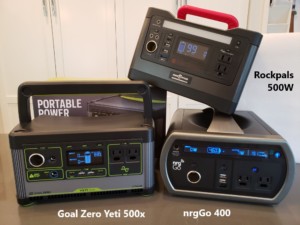 The ability to charge or power electronics, medical devices, and even televisions has become crucial or highly desired, and as a result, I have had the opportunity to test and review some of my friends’ and family’s purchases. They ranged from $50 batteries to $1,000 power stations, and each time, we learned more about what made them good and bad. But, there was one brand we all had avoided: Goal Zero, the industry leader in the battery station category. They are EXPENSIVE and did not look like they would provide a better choice when cheaper alternatives from the likes of Jackery, Rockpals, and nrgGo were available.
The ability to charge or power electronics, medical devices, and even televisions has become crucial or highly desired, and as a result, I have had the opportunity to test and review some of my friends’ and family’s purchases. They ranged from $50 batteries to $1,000 power stations, and each time, we learned more about what made them good and bad. But, there was one brand we all had avoided: Goal Zero, the industry leader in the battery station category. They are EXPENSIVE and did not look like they would provide a better choice when cheaper alternatives from the likes of Jackery, Rockpals, and nrgGo were available.
There has been an increase in people taking emergency preparation more seriously.
Recently, I had purchased a beefy Jackery Explorer 1000 for a “just-in-case” scenario. It was surprisingly light for a product that is capable of providing so much power. But then I wondered: why is Goal Zero the leader? They recently released their very cool-looking Yeti 500x, and I decided to take the plunge and get one. What I learned over the past 5 weeks was surprising.
In A Nutshell
The Goal Zero Yeti 500x really surprised me as the successor to the Yeti 400 Lithium. Pricing aside, I came to appreciate the design and engineering that went into it. It is a beautiful, tough (and tough-looking), relatively lightweight power station that dethroned my former 500Wh favorite for its compact size: the Rockpals 500W.
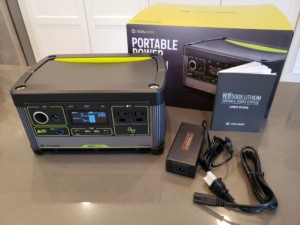 The Yeti 500x somehow manages to be even smaller while staying true to the company’s infamous safety mantra: top-tier LG battery cells, high-quality Battery Management System, Pure-Sine Wave AC output for sensitive electronics, and unmatched 1200W surge output. Marry that with a healthy, extensive ecosystem of products and accessories, and you can scale out the system as large or small as needed for a variety of uses. The 8mm 120W (front OR back) and USB-C PD 60W ports can be used at the same time with the MPPT solar controller to charge the Yeti even faster at 180W. Also not well-known in my circle of friends was the 12V cigarette car charger (Goal Zero/Amazon) that should deserve much more praise than the company had given because it could regenerate a battery at a whopping 120W in vehicles that support 10A — meaning, this Yeti 500x can be fully charged through the car port in 4.5 hours!
The Yeti 500x somehow manages to be even smaller while staying true to the company’s infamous safety mantra: top-tier LG battery cells, high-quality Battery Management System, Pure-Sine Wave AC output for sensitive electronics, and unmatched 1200W surge output. Marry that with a healthy, extensive ecosystem of products and accessories, and you can scale out the system as large or small as needed for a variety of uses. The 8mm 120W (front OR back) and USB-C PD 60W ports can be used at the same time with the MPPT solar controller to charge the Yeti even faster at 180W. Also not well-known in my circle of friends was the 12V cigarette car charger (Goal Zero/Amazon) that should deserve much more praise than the company had given because it could regenerate a battery at a whopping 120W in vehicles that support 10A — meaning, this Yeti 500x can be fully charged through the car port in 4.5 hours!
For an industry leader, however, there are some things I do not like, such as the continuous output being set at 300W when competitors in its class are 500W. Goal Zero’s products also go for a price premium, yet do not have accessories (like cables) included, reminiscent of Apple’s. Perhaps this is to minimize waste of unused parts or to allow for mixing and matching?
Overall, I am in love with the way the power station looks and how compact it is. Some thoughtful design was put into the product with top-notch components, and if GZ had bumped the continuous output to match the competition at 500W, the Yeti 500x — along with the safety reputation the company has been known for — would have been hard to beat.
Tip: A battery power station like this one cannot be used to jump start a car. Instead, I suggest getting a small, portable one specifically made for that, such as my favorite: NOCO Genius Boost Car Jump Starter (Lithium Battery).
[Update 3/24/2021: Even to this day, the Goal Zero Yeti 500x remains one of my favorite power stations.]
What’s Good? What’s Bad?
Pros
- Lithium-ion NMC cells made by LG (a top-notch, Tier 1 battery manufacturer)
- Very professional, tough look with a pleasing color scheme
- Aluminum exterior helps protect against bumps and battery puncture
- Given that Li-Ion batteries become more volatile as capacity increases, this added protection is important
- Environmentally friendlier than hard plastic
- Vertical, rounded edge grilles provide extra grip, heat dissipation, and act like phone case bumpers
- Rounded corners are less likely to shatter than sharp edges
- Jackery, Rockpals, Suaoki, and other brands I have tried were made of hard plastic shells that may be more prone to cracking and overheating
- Brushless fan (JDH6020S) on each side with front-bottom vent for cooling
- Aluminum exterior helps protect against bumps and battery puncture
- MOST compact 505Wh power station I have seen (11.25″ x 7.5″ x 5.8″)
- Relatively lightweight at 13 lbs with aluminum exterior
- Rockpals 500W: still lighter with its plastic shell at 12.13 lbs
- Yeti 400 Lithium: 16.3 lbs
- Roughly equivalent to a 136,487 mAh 3.7V power bank (or 46,759 mAh 10.8V)
- Capacity to power a 30″ LCD monitor and Mini PC for 5-7 hours, a Toshiba 50″ Fire TV for almost 4.5 hours
- Relatively lightweight at 13 lbs with aluminum exterior
- Pure-Sine Wave AC Inverter capable of continuous 300W power (and unmatched 1,200W peak) — See USAGE section
- Clean power for sensitive electronics
- Less heat
- Note: Some manufacturers claim to be Pure-Sine when they are actually Modified or Square Waves
- High-quality BMS (Battery Management System) for safety
- Provides built-in overload, overcharge (automatic stop when the device is full), and short-circuit protection
- Regulated Input and Output ports
- Can power AC and DC (USB/12V Car adapter) at the same time (as long as they draw less than 300W combined)
- Laptop, tablet, phone, light, fan, CPAP medical device, projector, TV, mini refrigerator, speaker, camera, and SOME rice cookers
- Faster charging with MPPT controller (Maximum Power Point Tracking). Older Yeti 400 Li uses PWM
- Two input options: 120W 8mm port (front OR back) and/or USB-C PD 60W
- Both can charge concurrently for 180W total! (Jackery Explorer 500’s max is 100W)
- Can parallel-connect multiple solar panels for faster charging with a Y-branch cable (not included)
- Both can charge concurrently for 180W total! (Jackery Explorer 500’s max is 100W)
- Can be used while charging
- USB-C PD is powerful enough to charge a 60W laptop (ie. 13″ MacBook Pro)
- Two input options: 120W 8mm port (front OR back) and/or USB-C PD 60W
- Foldable handle with a comfortable, non-slip grip
- Top of Yeti 500x is concave to help keep small items from getting lost. Nicely done!
- No other tested power station has that, except for the nrgGo 400
- Top of Yeti 500x is concave to help keep small items from getting lost. Nicely done!
- Excellent, informative LCD with LED backlight
- Total power coming in (via solar panel or AC adapter)
- Capacity left (as a percentage)
- Total power (AC and DC combined) being used
- Suaoki G500 (a product I no longer recommend) displays the Wattage separately for DC and AC, which I prefer
- Estimated hours
- When Input > Output, shows time to full
- When Output > Input, shows time to empty
- Units can be toggled between “Volts” and for Output: “Amps”, “Watts”, “Watt-hours”
- Bottom is well-protected by neon green, non-slip feet
- Manual: Unusually detailed with some helpful tips
- Great technical support
- Good customer service, though I was very impressed by the sizeably positive stories from Jackery’s customers
- Large ecosystem of accessories and interoperable products (batteries, solar panels, etc.)
- 2 year warranty
- American company founded with humanitarian goals
- Hopefully, they will not deviate from the “Don’t be evil” mantra like Google famously did
Cons
- Continuous output is only 300W when most competitors are 500W
- Most people likely do not use more than 300W, but having it this low limits the number of devices you can plug in at the same time
- Yeti 500x was capable of sustaining a test 350W output. Although it could do that, going over 300W for long can shorten the battery’s life over time
- Its BIG advantage over others is the 1200W surge output — See USAGE section
- Most people likely do not use more than 300W, but having it this low limits the number of devices you can plug in at the same time
- Display, though quite informative, does not show separate power consumption for DC and AC like the Suaoki G500
- LCD is unreadable without LED backlight
- No QuickCharge 3.0 USB output for rapid charging of compatible devices
- 60W AC Adapter does not utilize the 8mm input port’s full capability of 120W
- Could be considered heavy by some due to the use of aluminum housing instead of plastic
- No built-in light to illuminate your walking path (or area) or blink “S.O.S.”, the international distress signal
- Jackery, Rockpals, and some unknown brands have that
- I really like Rockpals’ LED bar
- Automatic shutoff when idle is an unusually long 30 hours
- Ensures Yeti does not turn off when a low-powered device (like medical CPAP) is used overnight
- Could unexpectedly drain battery from 100% to 40% with nothing connected (because AC inverter uses 7W on its own)
- Power buttons can be accidentally turned on/off with a short press (ie. while packing away your camping gear)
- Suaoki G500 requires a 2-second press to minimize unintended power on or off
- No master button to turn off ALL outputs at the same time
- Other auto off times
- Jackery Explorer 1000 & 500: 12 hrs (when less than 10W used)
- Rockpals 500W: 10 hrs
- Multiple fans turn on during high peak and can be too noisy for some
- Premium pricing
- No cable accessories or carry bag included besides the 57W wall charger (takes 100-240V input, though you can’t bring batteries of this capacity on a plane)
- Competitors often throw in cables for charging via solar or car cigarette socket, and sometimes a small case to hold them
- Cannot be chained to other Yetis to extend capacity (some GZ products, like the Yeti 1500x, can)
- Battery not replaceable (some GZ products can)
- Leads to landfill/environmental waste. Please recycle responsibly!
- Not waterproof. Keep it away from water splashes, rain, and pool!
- Lithium and fire or water can cause serious damage or injury!
Ports
All input/output ports are Regulated.
Input
- (2) 8mm (1 front, 1 back — but only ONE can be used at a time)
- 13-22V, max 10A, max 120W
- WARNING: Do NOT use a power source/solar panel that exceeds 22V or 10A!
- Can be used for solar charging
- Use of multiple solar panels
- WARNING: Do NOT daisy-chain them in sequence/series as that can output more than 22V combined!
- Connect them in PARALLEL instead with a Y branch cable (not included)
- Accepts up to 120W
- Use a panel that’s between 30W – 120W at 18V (with the right Amps to equal 120W)
- In not-so-sunny conditions, you may connect multiple in PARALLEL to get closer to 120W
- If you attach a 220W solar panel (with 22V x 10A = 220W), it will charge at only 120W
- Suaoki G500 takes up to 150W. Rockpals 500W up to 200W
- Use a panel that’s between 30W – 120W at 18V (with the right Amps to equal 120W)
- Solar charging tests on a sunny, cloud-less, California Spring day (Note: Efficiency is always lost during solar conversion))
- nrgGo 100W with nrgGo’s optional 8mm-to-MC4 adapter: Excellent @ 69-84W of input
- Cable fits 500x perfectly
- Jackery SolarSaga 100W with Jackery’s included Anderson-to-8mm cable: Excellent @ 64-87W of input
- Cable did not fit 500x’s back port, and loosely worked with the front one. For better fit, buy a Goal Zero one
- Suaoki 160W with nrgGo’s 8mm-to-MC4 adapter: Good @ 109-131W of input
- nrgGo 100W with nrgGo’s optional 8mm-to-MC4 adapter: Excellent @ 69-84W of input
- Use of multiple solar panels
- 13-22V, max 10A, max 120W
- (1) USB-C PD 60W
- Both for input/output
- Can charge concurrently with the 8mm port for a total of 180W of input
Output
- (2) AC with 3 prongs (120V, 60Hz, 2.5A)
- Inverter handles a continuous 300W, peaking at an unmatched 1200W! — See USAGE section
- Note: Uses 7W with nothing plugged in
- (1) Cigarette socket (12V, max 10A, max 120W)
- (1) 6mm (12V, max 10A, max 120W)
- Single, compact 12V port to universally charge electronics with different connectors using a variety of adapters
- Allows GZ to create 12V products to use 6mm instead of the bulky cigarette socket
- (1) USB-C PD (5-20V, max 3A, max 60W) – Both for input/output
- (2) USB-A (5V, max 2.4A, max 12W)
- (1) USB-C (5/9V, max 3A, max 18W)
Usage
- To turn ON or OFF the DC (12V Car/6mm, USB) or AC outputs, press the corresponding button (“12V”, “USB”, “AC”)
- Note: This single-press (without hold) can lead to accidental power on/off, unknowingly draining the battery until idle auto-off kicks in
- Li-ion NMC batteries have 500 charge cycles before capacity drops to about 80% from when they were new
- Product could, in theory, be charged up to 2,000 cycles — about 1/4 of total capacity is lost every 500 cycle
- Unlike LiFePO4 batteries, NMC can operate only in temperatures between 32-104F (0-40C). Both are Lithium-ion chemistries
- GZ’s Battery Management System (BMS) prevents:
- Recharging in temps outside of 32-113F
- Outputting power in temps outside of 14-149F
- GZ’s Battery Management System (BMS) prevents:
- Battery, like all Li-ion, slowly drains over time even when station is powered off
- Could take 1-1.5 years to go from full to empty
Continuous vs Peak Output
 Yeti 500x’s AC Inverter provides a continuous output of 300W with an impressive peak/surge of 1,200W
Yeti 500x’s AC Inverter provides a continuous output of 300W with an impressive peak/surge of 1,200W
- AC Inverter: Component responsible for converting battery (DC) power into AC for use by electronics
- Continuous Output: As long as a device (or combination of multiple ones) does not exceed 300W, it can be used
- A TV that uses 100W can be used because it is less than 300W. You can add more devices as long as they do not exceed 300W combined
- A miter saw I have uses 1,800W, and because it exceeds 300W, it cannot be used
- Peak/Surge: Almost every device temporarily draws more power when it is turned on. The highest amount it pulls during that time is the Peak/Surge. This Yeti can accept up to a whopping 1,200W!
- A TV that uses 200W (continuous) may temporarily suck up 700W (peak) when powered on. Because 700W is less than 1,200W (peak), this battery will allow the TV to turn on at that level for a few seconds (any longer, and it might cut power as a safety precaution). After a few seconds, the TV then only uses 200W (less than the continuous 300W limit) until the battery is drained
- An unusual device that uses 250W (continuous) and surges to 1,500W when powered on would instantly be shut off by the Yeti. Why? Even though the device uses just 250W while already on, it jumps to 1,500W when powered on, exceeding the 1,200W surge limit of the Yeti
Most devices power on at a higher (Peak) wattage than when they are already on (Continuous). Therefore, if its peak exceeds the power station’s max, it may not be able to start
Goal Zero Yeti Comparison
| Product | Battery Capacity | AC Inverter (Continuous) | AC Inverter (Surge) | Max Input | Expandable | Charge Controller | WiFi, BT | Weight | Dimensions (inches) |
|---|---|---|---|---|---|---|---|---|---|
| Yeti 200x | 187Wh NMC | 120W | 200W | 120W | No | MPPT | No | 5 lbs | 7.9 x 5.1 x 5.1 |
| Yeti 500x | 505Wh NMC | 300W | 1,200W | 120W | No | MPPT | No | 12.9 lbs | 7.5 x 11.3 x 5.8 |
| Yeti 1000c | 983Wh NMC | 1,200W | 2,400W | 300W | No | MPPT | No | 31.7 lbs | 15.3 x 10.2 x 9.9 |
| Yeti 1000 Lithium | 1,045Wh NMC | 1,500W | 3,000W | 360W | Yes. Yeti Link, MPPT | PWM | No | 40 lbs | 15.3 x 10.1 x 9.3 |
| Yeti 1000x | 983Wh NMC | 1,500W | 3,000W | 600W | Yes. Yeti Link | MPPT | No | 31.7 lbs | 15.3 x 10.2 x 9.9 |
| Yeti 1500x | 1,516Wh NMC | 2,000W | 3,500W | 600W | Yes. Yeti Link | MPPT | WiFi, BT | 45.6 lbs | 15.3 x 10.2 x 10.4 |
| Yeti 3000x | 3,032Wh NMC | 2,000W | 3,500W | 600W | Yes. Yeti Link | MPPT | WiFi, BT | 69.8 lbs | 15.3 x 10.2 x 13.6 |
| Yeti 6000x | 6,010Wh NMC | 2,000W | 3,500W | 600W | Yes. Yeti Link | MPPT | WiFi, BT | 106 lbs | 15.3 x 10.1 x 17 |
Calculations – Size & Time
What size battery should you get? How long will it power your fridge for? How long will it take to recharge? The below calculations can help answer those questions and are rough ESTIMATES as conditions, battery quality, and age can vary.
Time to Charge Battery
- 3 hrs at max input of 180W (120W via 8mm, 60W via USB-C PD)
- Wall charger: 8.5 hrs at 60W
- Car charger: 4.5 hrs at 120W
Charge Time with Solar
- Calc: Hours to charge battery = Battery capacity (Wh) / (Panel Wattage x [0.5 or 0.75])
- In a perfect lab environment, solar panels charge at the indicated wattage (ie. 150W)
- Expect to only receive 50-75% on a good, sunny day (ie. 75W – 113W), depending on environmental conditions, panel’s age, and component quality
- 100W solar panel: as fast as 6.7 hours [505 Wh / (100W x 0.75)] to charge
- Tips
- Keep charging even when overcast as the panels will STILL collect energy
- Underproduction: If a 100W panel is not making enough (ie. only 50W) due to bad conditions, adding an extra one can generate a higher, combined output (ie. 50W + 50W from the two panels = 100W total)
- Overproduction: If the panels make more (ie. 200W) than the maximum the power station charge port can take, only the max the power station can take will go through
- WARNING: do NOT connect panels sequentially or you may output too much voltage and fry the power station! Connect them in PARALLEL with a Y-Branch cable
Watts Used/Produced
- Calc: Watts used or produced by device = Voltage x Amperage
- Vacuum with 120V @ 9.5A uses 1,140W
- Solar panel with 12V @ 10A can produce up to 120W
If a device draws more than 300W for an extended period of time, the power station will shut off as a safety precaution. This can also shorten the battery’s lifetime
Ideal Battery Size
- Calc: Battery capacity (Wh) = Watts used by device x Hours needed for / 0.85
- 10-15% of power is lost during power conversion
- 45W car fridge needed for 8 hours: Minimum 424Wh power station (45W x 8 / 0.85)
How much energy a battery can store is measured in Wh (Watt-hours), and how much power is used or produced in W (Watts).
Time Before Battery is Empty
- Calc: Hours available for device = Battery capacity (Wh) x 0.85 / Watts used by device
- 10-15% of power is lost during power conversion
- 60W laptop with 505Wh battery: Up to 7.2 hours (505Wh x 0.85 / 60W)
Time to Charge Device
- Calc: Hours to charge device = Device’s battery capacity (Wh) / Input Wattage
- 60W laptop with 200Wh battery: Up to 3.4 hrs (200 Wh / 60W)
Conversion to mAh
- Calc: Powerbank-equivalent capacity (mAh) = Battery capacity (Wh) / Voltage x 1000
- 1 Ah = 1000 mAh
- Yeti’s 505Wh at 3.7V is roughly a 136,487 mAh powerbank (505 Wh / 3.7V x 1000) or a 46,759 mAh at 10.8V
Tips
- Always test your devices with the power station before you depend on it on the go
- Lithium-ion batteries are volatile
- To minimize fire damage to your belongings or loved ones, store the power station in the garage and not inside the house. Best storage is a dry, cool place, however
- You cannot bring a battery of this capacity on a plane
- With the right BMS, quality batteries, and other factors, the power station can be stored in the car while camping during a hot, California summer
- Keep the battery out of direct sunlight. I usually store it on the floor of the car and crack open the windows a tiny bit
- Do not USE in the car if temperatures fall below or exceed the battery’s rated, operating temperature (32-104F or 0-40C)
- Charging with multiple Input ports
- There are two 8mm ports (front and back)
- Only one will be allowed to receive power
- Having both Inputs receive different Voltage levels could have one drive power to — and damage — the other
- USB-C PD port can receive power at the same time as the 8mm ports due to being on a separate charge control circuit
- There is no overload risk for concurrently using it with the 8mm port
- There are two 8mm ports (front and back)
Keep your car cigarette lighter with the power station — you could plug it into its 12V DC socket for starting a camp fire
 If using a car charger, make SURE you only charge this station while the car is RUNNING. Otherwise, you’ll deplete your car’s battery and leave you stranded
If using a car charger, make SURE you only charge this station while the car is RUNNING. Otherwise, you’ll deplete your car’s battery and leave you stranded- If charging with a solar panel, be sure to keep the station out of direct sunlight as it could overheat
- A solar panel is NOT required to use the battery
- Yeti 500x uses the MPPT solar charge controller/regulator
- Smarter, more efficient and expensive than PWM (Pulse Width Modulation)
- Suitable for larger systems
- Can be used and charged at the same time. Manufacturers’ recommendations for their own products:
- Yes, that’s fine: Goal Zero, Jackery, Rockpals, nrgGo
- No/Not advisable: Suaoki
- NEVER charge the power station itself in below freezing temperatures, or you will damage the Li-ion battery AND potentially limit its overall capacity
- You CAN use it to power OTHER devices because the generated heat will warm its battery enough to be within operating temps
- At below freezing temps, keep it in an insulated cooler and connected to a power source (ie. solar panels). The heat generated by the battery will keep it running as best as it can
- Turn off any output ports (AC/DC) that are not being used in order to conserve power
- Without anything plugged in, the AC inverter still draws 7W on its own
- Do not use any power station in a tightly enclosed area as it can overheat
- CleverMade 18-Can Collapsible Cooler Bag perfectly fits the Yeti 500x as a carry bag with pockets
- If charging the station with the car socket, you cannot get it to 100% capacity with a 12V outlet. If you have a 24V outlet, however, you could
- To prolong the battery lifetime while in storage, keep the battery fully charged every 3-6 months
- Or, according to customer support, keep it plugged in when not in use and discharge it to 50% every 3-4 months
- The charging controller automatically gets disabled once the batteries are full
- NOT using the battery for a very long time can actually hurt its lifetime
- There is no “memory effect” in this station’s battery
- Note: It is better to NOT let it completely drain before recharging
- The battery is NOT replaceable, although some of Goal Zero’s products are
- Or, according to customer support, keep it plugged in when not in use and discharge it to 50% every 3-4 months
CAUTION: Lithium-ion (LiFePO4 and NMC) batteries do NOT like to remain discharged at 0% for prolonged periods of time. If you let your battery stay at 0% for too long, you may not be able to charge it again without specialized equipment.
Jump Start Car?
A battery power station like this one cannot be used to jump start a car. Instead, I suggest getting a small, portable one specifically made for that, such as my favorite: NOCO Genius Boost Car Jump Starter (Lithium Battery).
Portable Air Conditioner
The EcoFlow Wave is a portable air conditioner that accepts both AC and DC input. The company, of course, recommends using its own Delta power stations for better efficiency and longer runtime because they can draw directly from DC power. In a pinch, any battery or generator capable of providing the Wave-required input wattage could be used, but keep in mind that AC power loses some energy due to conversion to DC.
Goal Zero 12V Car Charger
I wanted to point out how GAME-CHANGING the Goal Zero 12V Car Charger is (Buy on Goal Zero/Amazon). The company inexplicably does not promote its benefits enough, but it can be used to charge batteries at a whopping 120W when the car port supports 10A (like my Toyota Sienna and Highlander did!) All other car chargers I have (Jackery, Rockpals, Paxcess) only go up to 60W, but the Goal Zero can double that! What does that mean? Faster charging while driving around town! I bought two — one for use with the Yeti 1500x and another with the Jackery Explorer 1000.
The Goal Zero 12V Car Charger can charge a supported Goal Zero, Jackery, Bluetti, or EcoFlow battery at a whopping 120W!
CleverMade 18-Can Carry Bag
The official, Goal Zero Yeti 400/Yeti 500x carry bag costs $50. At half the price ($25), the CleverMade 18-Can Collapsible Cooler Bag perfectly fits as an insulated, protective case with pockets, a bottle opener, and plenty of space to spare.
Final Thoughts
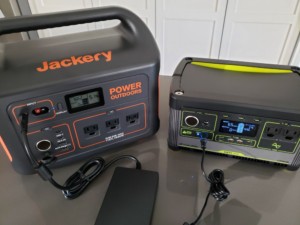 Am I glad to have the Yeti 500x? It depends. Every product has its pros and cons and every brand targets a specific set of customers. Jackery and Rockpals do well on Amazon, and Goal Zero seems to dominate the retail space with a presence at REI, Home Depot, Walmart, Best Buy, Lowe’s, Backcountry.com, and even creatives-focused B&H. With a healthy ecosystem of safe products and accessories, Goal Zero can be expanded as large as one needs — something I have not noticed with any other manufacturer.
Am I glad to have the Yeti 500x? It depends. Every product has its pros and cons and every brand targets a specific set of customers. Jackery and Rockpals do well on Amazon, and Goal Zero seems to dominate the retail space with a presence at REI, Home Depot, Walmart, Best Buy, Lowe’s, Backcountry.com, and even creatives-focused B&H. With a healthy ecosystem of safe products and accessories, Goal Zero can be expanded as large as one needs — something I have not noticed with any other manufacturer.
For everyday use and lightweight/compact travel, it is my first choice to take on a trip. It simply is a beautiful product that screams STRENGTH! However, when more power is needed for longer periods of time or for use with high-wattage devices, I would grab the previously-reviewed, Jackery Explorer 1000. Both products are excellent, safe choices — it simply depends on what your needs are, how much you are willing to spend (and carry), and what ecosystem you want to invest in. For the hardcore, most demanding users, Goal Zero is by far the best pick.
The company has higher capacity batteries in the works, according to The Verge, with the upcoming Yeti 1000x, 1500x, 3000x, and the insane, 6000x.
Where To Buy
- Goal Zero Products
- Yeti Power Stations
- 500x (Goal Zero | Amazon)
- iGreely Extension Cables: 8mm / HPP (APP)
- CleverMade 18-Can Collapsible Cooler Bag (Fits Yeti 500x perfectly)
- 1000x (Goal Zero | Amazon) – See our Review / 1000 Core (Amazon)
- Goal Zero vs Jackery: Yeti 1000 Core vs 1000X vs Explorer 1000
- 1500x (Goal Zero | Amazon) – See our Review / 3000x (Goal Zero | Amazon) / 6000x (Goal Zero | Amazon)
- Yeti Carry Case (Large) for Yeti 1500x, 1000x, 1000c (Goal Zero | Amazon)
- 500x (Goal Zero | Amazon)
- 12V Car Charger (60W or 120W) (Goal Zero | Amazon)
- Solar Panels
- Cables (Goal Zero’s “HPP” is the same as “APP”)
- Yeti Power Stations
- Other Solar Panels:
- Jackery SolarSaga 100W – See our Review
- Rockpals 80W – See our Review / Suaoki 160W / nrgGo 100W
- nrgGo 400 Power Station – See our Review
Related Posts
- Power Generators: Gas vs Propane vs Battery Station (and Solar)
- Ultimate Reference: Power Station Comparison
- EcoFlow Wave Portable Air Conditioner
- Reviews
- Goal Zero vs Jackery: Yeti 1000 Core vs 1000X vs Explorer 1000
- Goal Zero Yeti 1500x / Yeti 1000x
- Jackery Explorer 2000 Pro / Explorer 1000 / Explorer 300
- EcoFlow Delta Pro LiFePO4
- Bluetti EB70S LiFePO4
- BigBlue Cellpowa500 LiFePO4
- Rockpals 500W / nrgGo 400
- Quick Look
- Announcements
Other Useful Topics
Power Station Comparison
Check it out!
Ultimate Reference: Power Station Comparison – We summarized the specifications of many of the power stations we had come across or reviewed all in one place.
Gas/Propane Generators vs Battery Power Stations
In July 2020, I wrote about this topic after many asked what their differences were. In short, gas/propane generators can run virtually forever but are loud, dirty, and potentially quite dangerous. Battery power stations, on the other hand, are more portable, silent, less volatile, and can be operated indoor, but depend on external power (like solar) to recharge. Where gas/propane are used to GENERATE electricity, batteries STORE them for later use. Personally, I am a fan of the latter because they are so easy to carry around and are safer to use.
Who is Goal Zero (GZ)?
Going through the company’s history, the founder in 2007 started with a vision to help the poorest people of Congo get out of poverty. Their first product: the GoBe battery that now is the Yeti 150. Goal Zero was formed in 2009 with the mission to do good and provide “reliable power in the hands of every human being”. Its charitable arm had provided aid in areas struck by natural disasters.
Goal Zero’s portable power stations stand out in an increasingly competitive field with their unmatched safety record and use of quality components — and correspondingly high price tag. In fact, their Yeti 6000x with its 6,000Wh of energy (that could also be extended) was a powerhouse that not many competitors were able to safely provide at the time.
A friend of mine once said that GZ is “the best of the best” because of one simple reason: their vast ecosystem. I did not understand at the time what he meant, but as I learned more about the Yeti 1500x, my eyes were opened. The Yeti 1000x also taps into that same collection, but the Yeti 1000 Core does not.
Battery Technology and Safety
Goal Zero debuted with Lead-Acid batteries that were bulky and heavy. Today’s devices use Lithium-ion — commonly Nickel Manganese Cobalt (NCM) or Lithium Iron Phosphate (LiFePO4 / LFP) chemistries — for more power in a smaller, lighter package. NMC, however, is more volatile than LiFePO4 and becomes riskier as more cells are packed together. Goal Zero and Jackery used NMC for some time whereas EcoFlow and Bluetti use LiFePO4. Jackery launched its first LiFePO4 model in mid-June 2023 and Goal Zero in October that year.
- How much energy a battery can store is measured in Wh (Watt-hours), and how much power is used or produced in W (Watts)
- The higher the Watt-hour (Wh) capacity rating, the more dangerous the battery could become if not handled right
The quality of the battery cells and the BMS (Battery Management System) are crucial for safety.
Cell Manufacturers
Battery cells made by LG and Sony are among the best in the hobbyist world as are Sanyo/Panasonic and Samsung. Goal Zero uses LG. Jackery also uses LG or BAK (a leading Chinese brand). EcoFlow makes its own. During my years of research, I found that use of lower-quality batteries could pose a serious risk to life and property and should become a crucial part in deciding what to buy.
Safety
The second part in a battery’s safe operation depends heavily on the design and BMS (Battery Management System). Some BMS manufacturers, unfortunately, overstate their capabilities that could lead to catastrophic failure.
- Design should allow for proper, thermal cooling, use quality components, and obtain proper certifications
- Batteries made by known manufacturers are less likely to fail
- BMS should sufficiently restrict the battery from going past its capabilities
Li-ion: LiFePO4 vs NMC
There had been a lot of debate over whether Nickel Manganese Cobalt (NMC) or Lithium Iron Phosphate (LiFePO4) was better. Both are Lithium-ion batteries. Goal Zero, Jackery, and most of today’s power station manufacturers use NMC, but why do EcoFlow and Bluetti use LiFePO4 when they are bulkier and heavier? There are important distinctions, but the best battery is the one that meets all or most of your unique needs.
Charge Cycles
One of the most significant differences — and buying factors — is the charge cycle count for both battery chemistries. It measures how long the battery can be used for before it must be replaced or thrown away. LiFePO4’s count is as high as 4,000 cycles (as of 2023) whereas NMC is 500+. However, both have a useful life that can range between 3,000 – 5,000 cycles (even as much as 7,000 with proper care). But how does the count determine longevity?
Let’s look at Li-ion NMC as an example. It loses about 20-25% of total capacity after every 500 charge cycle. That means after the first 500 cycles, the battery drops 20% from when it was new, then another 20% after the next 500 cycles, and 20% again after that one. It would take roughly 1,500 charging cycles to have the battery last only half as long as when it was brand-new. Thus, it should be usable for 2,000+ cycles or about 6-10 years. Li-ion LiFePO4 can last longer.
CAUTION: Lithium-ion (LiFePO4 and NMC) batteries do NOT like to remain discharged at 0% for prolonged periods of time. If you let your battery stay at 0% for too long, you may not be able to charge it again without specialized equipment. Keep them at between 20-80% while in storage to maximize their lifetime.
LiFePO4 Advantages
- Safer, less volatile, and thus cheaper to manufacture
- Higher charge cycle: 1500-2000 (10+ years). NMC: 500+ (6-10 years)
- Usable in more extreme temperatures (-4F/-20C to 176F/80C). NMC: only 140F/60C max
- Holds 350-day charge. NMC: 300
NMC Advantages
- Smaller and lighter. Allows for more portable products
- Faster charging

